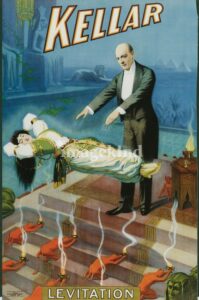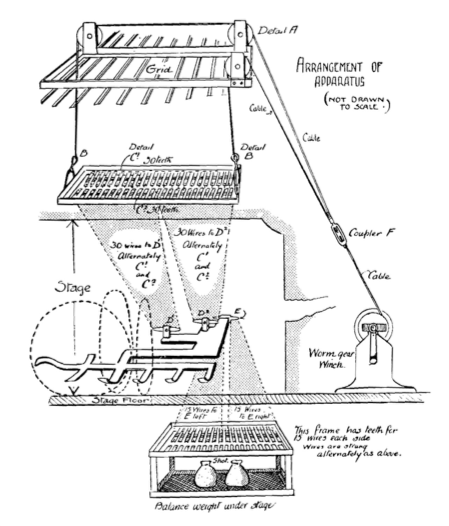There are a wide range of methods of levitating a performer on stage.
Method 1
One of the oldest routines features a single vertical pole or broom, on which the magician’s assistant is resting,

Method 2 – Maskelyne/Kellar Levitation
A metal frame is suspended by a series of very thin wires connected to a frame above the stage, and to a counterweight below the stage.

Illustration shows ‘Nevil Maskelyne’s levitation apparatus diagram used at the end of the nineteenth century. Goldston, Will (no date). Exclusive Magical Secrets. London: The Magician Ltd (original edition). New York, Dover Publications Inc, 1977, p. 446’, from https://www.horda.org/036
Method 3
Another method features the same metal frame supporting the magician’s assistant. This time, the frame is fixed to a vertical pole, which, in use, is hidden by the magician’s leg, which must remain in the correct position.
The illusion was patented in 1979 by Gale Molovinsky, and can be viewed on Google Patents.
Method 4
Similar to method 2, but with the addition of a rotation around the supporting pole. A cloth should be used to hide the mechanism while it is rotating.
Method 5 – Paul Daniels Levitation
Method 6 – David Copperfield Flying
After 7 years of development, and at a cost of over $1 million, Copperfield transforms the levitation into flight.
The computer-controlled system behind the illusion was patented in 1992 by John Gaughan, and can be viewed on Google Patents.
